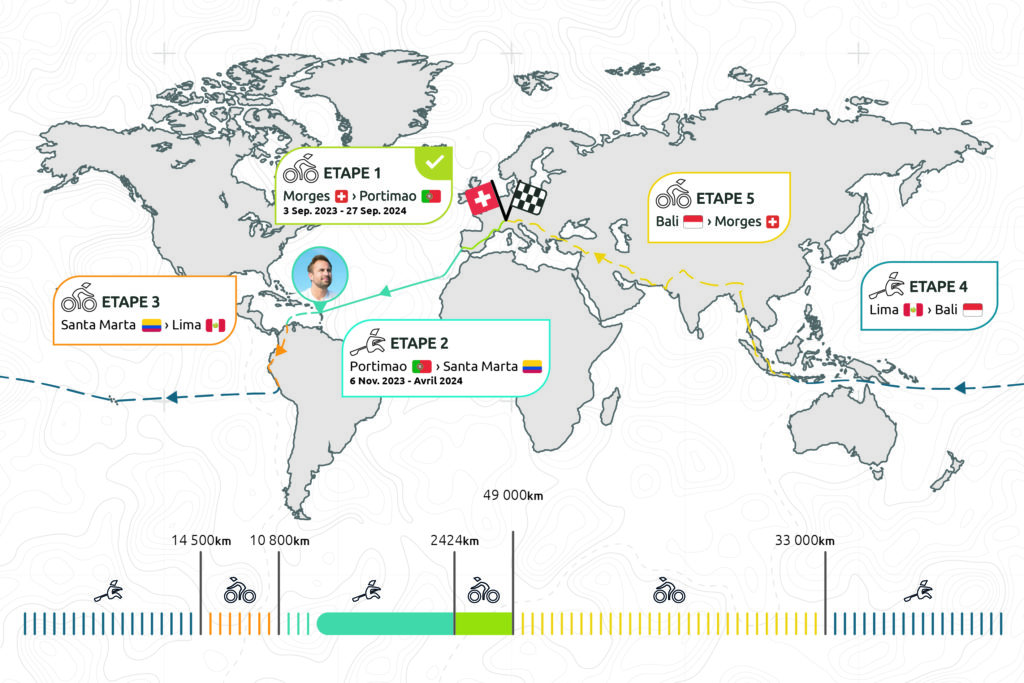Change of Course
After nearly four weeks of well-deserved rest in Martinique, unfortunately, one of which was spent in bed after being infected by the Dengue virus, it is soon time for Louis Margot to resume his human-powered adventure. The departure from the French island will take place from the municipality of Le Marin, a village in the southeast of the island, at the beginning of April.
According to the plan devised before his departure in September from Morges, the rower was supposed to reach Costa Rica and then cycle up to the West Coast of the United States of America. However, this option is no longer being considered. It will now involve rowing to Colombia and then cycling to Peru. From there, Louis will embark on the Great Crossing: the Pacific Ocean.
A Departure from the South
To cross the Pacific by rowing, “there are two ways,” describes the adventurer, “either starting from the north or from the south.”
Although a Pacific crossing starting from the West Coast of the USA would be shorter in terms of time and distance, it is also a challenging starting point in terms of winds, which make it difficult to move away from the coast initially. The wind direction could also result in not sufficiently pushing the boat westward and not leading it towards the Hawaiian islands, originally planned as a stopover, but rather pushing it too far south. “If one is prepared and has enough food, it’s not a problem,” comments Louis Margot, “but it’s tough because it means crossing the Pacific without a break.”
Furthermore, the cyclone season extends from mid-May to late November, which would have forced Louis to leave Martinique early to reach the North American West Coast as quickly as possible. It would have been an almost impossible race against time in which the rower did not want to engage.
By choosing a departure from the south, the Vaudois is therefore opting for safety. Although longer, a crossing through the southern Pacific has the advantage of being safer due to the absence of hurricanes and the low number of depressions, up to Polynesia.
One Step at a Time
But the road is still long before reaching the capital of Peru, Lima, the planned starting point for the Great Crossing. Indeed, around twenty days of rowing will be necessary to reach Colombia, to which approximately four thousand kilometers of cycling will be added, including about thirty thousand meters of elevation gain to reach the Peruvian capital.
“The twenty days of rowing should be very favorable, perhaps too favorable,” he explains, “too favorable because in this area, the winds can sometimes blow up to 30 knots, creating large waves.” “We don’t realize it, but waves with a rowing boat are like roller coasters,” continues the Vaudois.
Finally, when asked about his safety while cycling, especially during the Colombian part of his cycling stage, the Vaudois, who takes this risk very seriously, summarizes the situation very simply: “Of course, it can be dangerous, but we can mitigate the risks by following instructions and being cautious. For example, I won’t ride at night, and I know not to go to the southeast of the country.”
Now, all that’s left is to go!
Article : Jérôme Laurent

AddressHuman Impulse
Chemin de la Forge 2
CH-1114 Colombier
Email info@humanimpulse.ch
Copyright © 2023 Human Impulse. All rights reserved. Website designed by Ulysse Rolland .